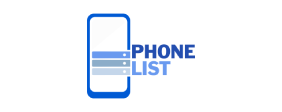In the world of graphic design, understanding the difference between raster and vector graphics is crucial. Raster graphics, composed of pixels, are ideal for complex images such as photographs. However, they can lose quality when resized, leading to raster to vector conversion service or pixelated images. On the other hand, vector graphics are created using mathematical equations, allowing them to be resized without any loss of quality. This fundamental difference makes vector graphics a preferred choice for designers, especially when it comes to logos, illustrations, and any design that requires scalability.
Enhancing Design Versatility
One of the most significant advantages of raster to vector conversion is the versatility it offers designers. By converting raster images into vector formats, designers can manipulate artwork more freely. This conversion allows for easy use email database to drive membership system activity in size, color, and shape without compromising image quality. For example, a logo designed as a raster image may look perfect at a small size but could become unrecognizable when enlarged. By converting it to a vector format, designers can ensure that the logo remains sharp and clear, regardless of the scale. This versatility is especially important in today’s digital age, where designs need to adapt to various platforms and formats.
Improving Print Quality
Another critical aspect of raster to vector conversion is the improvement it brings to print quality. When preparing designs for print, resolution is paramount. Raster images require high resolutions to maintain clarity, which can result in large file sizes. In contrast, vector images are resolution-independent and can be scaled to any size needed for barbados businesses organization applications without losing quality. This means that designers can produce high-quality prints for business cards, posters, and other marketing materials without worrying about pixelation. The ability to create crisp, clear images can significantly enhance a brand’s professional appearance.
Streamlining Workflow Efficiency
Converting raster images to vector formats can also streamline workflow efficiency for designers. Many design software tools offer features that facilitate the conversion process, allowing designers to spend less time manually recreating images. This efficiency is particularly beneficial for designers working on large projects or those who need to produce multiple variations of a design. By automating the conversion process, designers can focus on more creative aspects of their work, such as developing concepts and refining visual elements. This leads to a more productive work environment, enabling designers to meet deadlines and deliver high-quality results.

